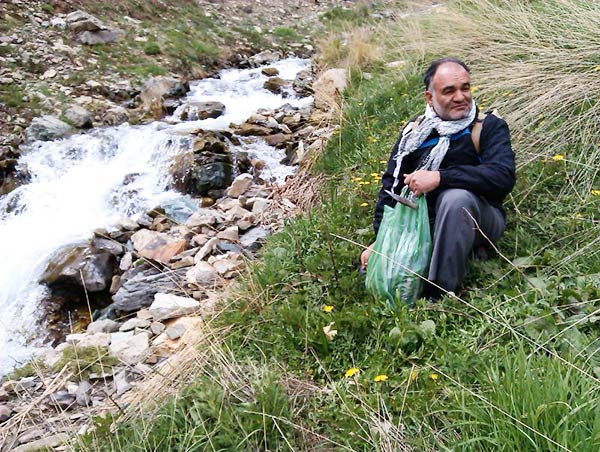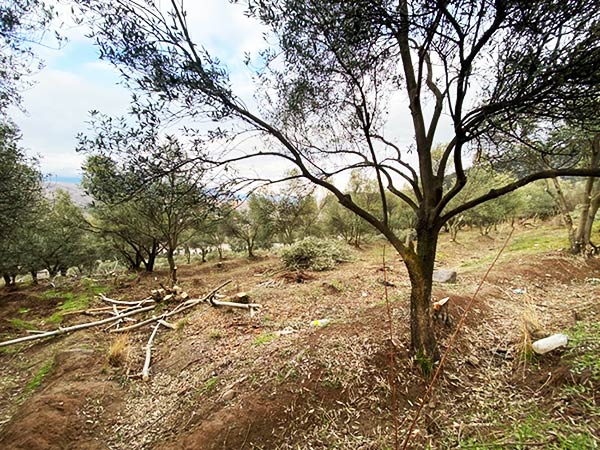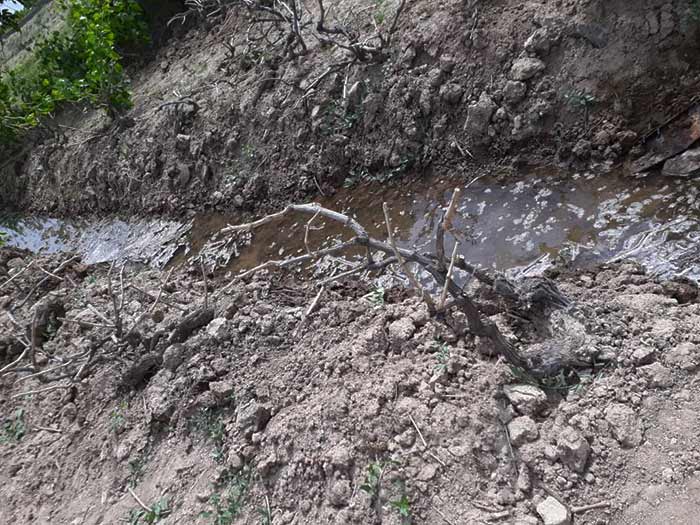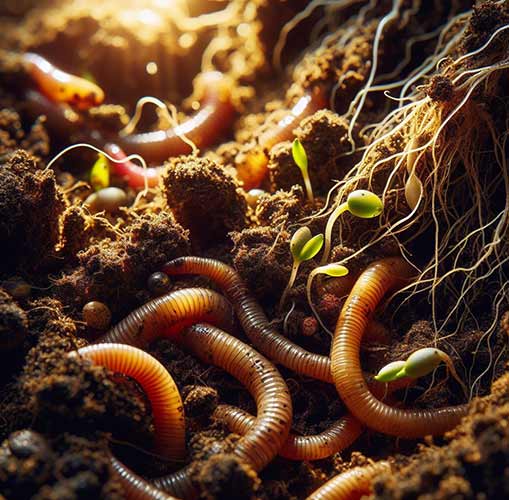What is the best soil for agriculture?
The importance of the most suitable soil for agriculture is very high.. Fertile agricultural soil and petrochemical fertilizers are one of the requirements to have a quality product. Therefore, knowing the types of agricultural soil can be of great help to dear farmers in order to choose the optimal product according to their soil. In the following, you will learn more about soil components.
Components of fertile agricultural soil:
The soil mass itself consists of two different parts. The first part is solid, and the second part is pores or fine holes.In the solid part, the soil bed for cultivation includes two subcategories: minerals and organic materials.
In the mineral materials, there are a series of fine and coarse soil particles that are formed based on the decomposed minerals from rocks, according to their dimensions and different shapes. The organic materials in the cultivated soil refer to a series of large organisms and microorganisms.
Suggested content:
For example, when bacteria and fungi decompose plants in the soil, a series of organic materials called humus are created. Humus has colloidal properties and is responsible for water absorption and nutrient retention. They play a very important role in the formation of suitable agricultural soil structure.
The second part is the pores or fine holes, which are actually a series of empty spaces between the solid soil particles that allow air and water to be transferred to the plant roots. Pores or fine holes are categorized into coarse, medium, and fine groups.
Another issue regarding the most suitable soil for agriculture is related to soil texture and the relative amount of soil particles. It is the soil texture that considers the physical and chemical properties of the soil in terms of productivity, specific gravity and permeability. Soil texture also has its own category. Agricultural soil types have different properties depending on the soil texture.
Types of suitable agricultural soils
Soils used in agriculture have different types, each with its own characteristics. Generally, three of the most common types of soil are as follows:
Peat moss:
If we want to introduce the soil base for cultivation, peat moss is one of the notable ones. In fact, the amount of peat moss that is used in the soil should be more than the other two materials. In peat moss, there are a series of raw materials that are very useful and necessary for the plant, and it is actually a substrate to protect the soil from salinity and other problems.
For research on saline soils in agriculture, enter this page. Peat moss creates suitable conditions for plant growth. The importance of cultivated soil is very effective in the growth of plants, and in fact, soil is considered the main foundation in agriculture. Agriculture is both limited to the cultivation of one-liter pots and it will also include the cultivation of plants in the fields. In general, the three main elements for cultivation in agriculture and soil selection are peat moss, cocopeat and perlite. It should be noted that the ratio of peat moss is higher than the ratio of the other two and their proportions are not the same.
Cocopeat:
Cocopeat is used to start seed planting. Cocopeat creates an environment that is anti-fungal and provides favorable conditions. When cocopeat is used for cultivation soil, the necessary air is provided and maintained in the middle layer of the soil, resulting in fertile agricultural soil.
On the other hand, cocopeat has a neutral pH and creates a better situation for the decomposition of the soil bed compared to peat moss. Rockwool also serves the same purpose as cocopeat. Cocopeat is actually the unused residues in the production of ropes and twines made from coconut husks.
Perlite:
It has been observed many times that soil becomes firm and compact after a period of irrigation, and generally, this requires the use of perlite in the soil. In fact, if perlite is not used in the cultivation soil, the space for oxygen supply to the roots becomes limited. Some people use gravel or sandy soil instead of perlite, but it adds more weight to the soil and becomes troublesome for potting purposes.
Some plants and vegetables that have extensive and wide roots require the use of cultivation soil containing perlite. Safety is essential. For example, parsley, lettuce, and carrots are on this list because the roots need to have enough space to grow and avoid problems. One of the very important aspects considered for the cultivation soil is the oxygen supply to the roots. In fact, the more oxygen supply process, the better the plant growth. Perlite itself helps to have suitable agricultural soil by creating more pores or small holes in the soil.
If cactus is to be planted, it is very important that the level of perlite used in the cultivation soil is higher. In fact, perlite in fertile agricultural soil ensures faster water penetration and prevents the plant from rotting.
The cultivation soil for plants that require more moisture should not have excessive perlite. This should be taken into account.
Characteristics of a fertile agricultural soil
It is crucial to enhance the cultivation soil if plants are to grow without any flaws or deficiencies. Ultimately, better results are seen when the improvement is done towards the initial cultivation soil. Elements such as vermicompost, potassium, phosphorus, iron, and nitrogen are usually not produced in the soil and need to be added through fertilization.
Methods of soil control
Preparing the cultivation soil correctly is important, but soil maintenance and control are also crucial and should be taken into consideration. There are several general factors regarding suitable soil control methods for agriculture, including controlling soil temperature, moisture, pH level, and regular soil fertilization.
However, it is important to note that there is no uniform formula for controlling conditions for all plants. In fact, soil control methods for cultivation are determined based on the specific plant to be grown.
One important aspect of soil control is related to soil pH, which should be routinely assessed. When the pH is properly adjusted according to the plant’s requirements, the plant can better absorb water and nutrients. Generally, the optimal range is between 6 to 5.6. To assess soil pH in the cultivation soil, a pH meter and buffer solutions for increasing or decreasing pH may be required.
For example, with a pH meter, you can assess the alkalinity or acidity level of the soil, which is of great value. If the pH level needs adjustment, buffer solutions can be used to increase or decrease it. Generally, soil pH, like moisture and temperature, fluctuates, necessitating constant monitoring. A general study of plants has shown that most vegetables and crops grow in acidic soils, while only a limited group of plants require alkaline soil for growth.

Asadullah Mohammadi is a distinguished gardener in iran
Problems of farmers and gardeners in the field of soil
In the article, the most suitable soil for agriculture, soil erosion is one of the main problems of farmers. Soils are eroded due to improper pH control, excessive moisture or drought. The lack of shelter and inadequate irrigation systems cause fertile agricultural soil to be replaced by degraded soil. Generally, sloped lands are important factors in preventing significant water loss.
Soil salinity and its negative effects on agricultural products have been observed repeatedly. This issue is mostly caused by water and climatic problems, such as drought, which affect the cultivation soil, making it alkaline, sodic, and saline. The following methods can help reduce soil salinity:
- Leaching: In this method, excess salts present in the cultivation soil are completely washed away and removed from the soil.
- Short irrigation intervals: It is necessary to shorten the time between two irrigations in order to irrigate the agricultural land more frequently. This prevents high salt concentration in the soil and improves its salinity.
- Use of specific fertilizers: This is another method to create fertile agricultural soil. It reduces soil salinity and decreases the soil salinity coefficient.
- Advanced irrigation methods: In general, advanced irrigation methods are seen to have positive effects on soil salinity reduction, soil fertility, and erosion prevention. These methods include drip irrigation and sprinkler irrigation, which can have positive effects on soil salinity correction and produce satisfactory results.
- Use of organic sulfur: Organic sulfur helps the soil to have the best reaction to temperature and weather conditions, making it a good product.
- Use of organic products as alternatives to pesticides and fungicides: DR FARM is one of the products that can be a suitable solution due to its disinfectant and pH regulating properties. Additionally, special agricultural peroxide, with its ability to provide more oxygen to the soil and plant roots without damaging organic and mineral nutrients, can increase soil fertility. For free technical consultation in this regard, feel free to contact our technical support at any time of the day. Our consultants will provide you with the necessary information.



I learned interesting information about soils. Please post more…